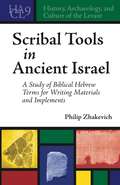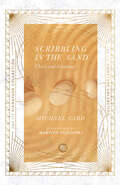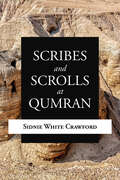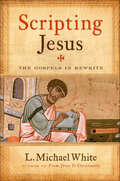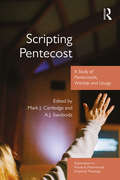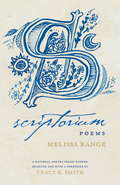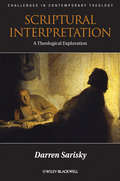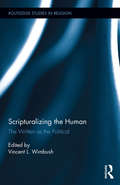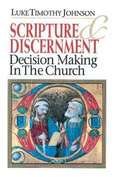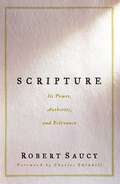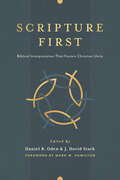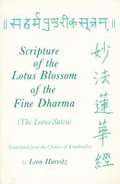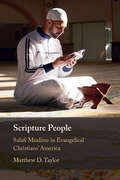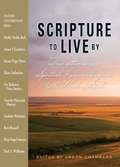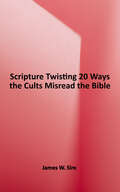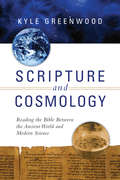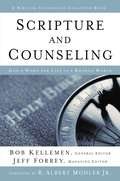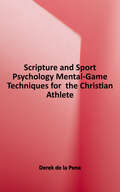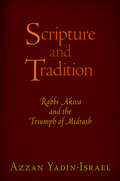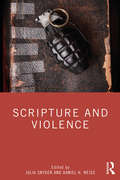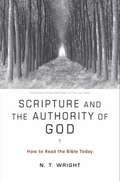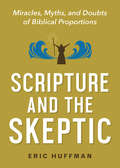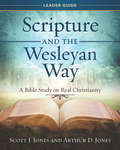- Table View
- List View
Scribal Tools in Ancient Israel: A Study of Biblical Hebrew Terms for Writing Materials and Implements (History, Archaeology, and Culture of the Levant #9)
by Philip ZhakevichIn this book, Philip Zhakevich examines the technology of writing as it existed in the southern Levant during the Iron Age II period, after the alphabetic writing system had fully taken root in the region. Using the Hebrew Bible as its corpus and focusing on a set of Hebrew terms that designated writing surfaces and instruments, this study synthesizes the semantic data of the Bible with the archeological and art-historical evidence for writing in ancient Israel. The bulk of this work comprises an in-depth lexicographical analysis of Biblical Hebrew terms related to Israel’s writing technology. Employing comparative Semitics, lexical semantics, and archaeology, Zhakevich provides a thorough analysis of the origins of the relevant terms; their use in the biblical text, Ben Sira, the Dead Sea Scrolls, and ancient Hebrew inscriptions; and their translation in the Septuagint and other ancient versions. The final chapter evaluates Israel’s writing practices in light of those of the ancient world, concluding that Israel’s most common form of writing (i.e., writing with ink on ostraca and papyrus) is Egyptian in origin and was introduced into Canaan during the New Kingdom.Comprehensive and original in its scope, Scribal Tools in Ancient Israel is a landmark contribution to our knowledge of scribes and scribal practices in ancient Israel. Students and scholars interested in language and literacy in the first-millennium Levant in particular will profit from this volume.
Scribal Tools in Ancient Israel: A Study of Biblical Hebrew Terms for Writing Materials and Implements (History, Archaeology, and Culture of the Levant)
by Philip ZhakevichIn this book, Philip Zhakevich examines the technology of writing as it existed in the southern Levant during the Iron Age II period, after the alphabetic writing system had fully taken root in the region. Using the Hebrew Bible as its corpus and focusing on a set of Hebrew terms that designated writing surfaces and instruments, this study synthesizes the semantic data of the Bible with the archeological and art-historical evidence for writing in ancient Israel. The bulk of this work comprises an in-depth lexicographical analysis of Biblical Hebrew terms related to Israel’s writing technology. Employing comparative Semitics, lexical semantics, and archaeology, Zhakevich provides a thorough analysis of the origins of the relevant terms; their use in the biblical text, Ben Sira, the Dead Sea Scrolls, and ancient Hebrew inscriptions; and their translation in the Septuagint and other ancient versions. The final chapter evaluates Israel’s writing practices in light of those of the ancient world, concluding that Israel’s most common form of writing (i.e., writing with ink on ostraca and papyrus) is Egyptian in origin and was introduced into Canaan during the New Kingdom.Comprehensive and original in its scope, Scribal Tools in Ancient Israel is a landmark contribution to our knowledge of scribes and scribal practices in ancient Israel. Students and scholars interested in language and literacy in the first-millennium Levant in particular will profit from this volume.
Scribbling in the Sand: Christ and Creativity (The IVP Signature Collection)
by Michael CardPublisher's Weekly"It was art and it was theater at the same time, but it was more. It was what he did not say that spoke most powerfully to the mob that morning. It was a cup of cold water for a thirsty adulteress and an ice-cold drenching in the face to a group of angry Pharisees.whatwhy.Singer, songwriter and diligent student of Scripture, Michael Card is well known for the depth of his lyrics and the artistry of his music. But far more significant than the songs he has penned is the source of his inspiration--the creativity embodied in Jesus Christ, the incarnate Word of God.In this book Card explores the biblical foundations of true Christian creativity. Whether we think of ourselves as creative or not, all of us are created in the image of our Creator God, and thus creativity is a vital expression of our discipleship. With Jesus as his model, Card shows how understanding God's creative imagination leads to a lifestyle of humility, obedience and servanthood. And he invites us to follow God's creative call through worship and community.Through Jesus, God has spoken to us in a word we can understand. Likewise, Michael Card has articulated the story of Jesus to others through his own scribblings in the sand. This book shows us how we can do the same.
Scribes and Scrolls at Qumran
by Sidnie White CrawfordThe discovery of the Dead Sea Scrolls altered our understanding of the development of the biblical text, the history and literature of Second Temple Judaism, and the thought of the early Christian community. Questions continue to surround the relationship between the caves in which the scrolls were found and the nearby settlement at Khirbet Qumran. In Scribes and Scrolls at Qumran, Sidnie White Crawford combines the conclusions of the first generation of scrolls scholars that have withstood the test of time, new insights that have emerged since the complete publication of the scrolls corpus, and the much more complete archaeological picture that we now have of Khirbet Qumran. She creates a new synthesis of text and archaeology that yields a convincing history of and purpose for the Qumran settlement and its associated caves.
Scripting Jesus: The Gospels in Rewrite
by L. Michael WhiteThe acclaimed author of From Jesus to Christianity reveals how—and why—the gospels were written in this groundbreaking work of Biblical scholarship. The greatest story ever told was honed like any good performance, on the road in front of audiences. In Scripting Jesus, acclaimed scholar of early Christianity L. Michael White demonstrates that the gospel stories of Jesus were never meant to be straightforward historical accounts, but instead they were each crafted with particular theological agendas for the ears of particular listeners. White challenges us to read the gospels as they were intended—as performed stories of faith, not factual accounts—and illuminates the agendas that motivated each of their authors. A fresh account of the gospels that have shaped centuries of Christian belief, Scripting Jesus offers important insight into how we can understand Jesus&’s story today.
Scripting Pentecost: A Study of Pentecostals, Worship and Liturgy (Explorations in Practical, Pastoral and Empirical Theology)
by A. J. Swoboda Mark J. CartledgeScripting Pentecost explores and develops an analysis of worship and liturgy in Pentecostal and Charismatic traditions. Organized into three main sections, history, theology, and contemporary practice, the first section quarries the historical trajectories of classic Pentecostalism, the Charismatic movement, Third-Wave, and Oneness Pentecostalism. Particular attention is given to the liturgical approaches of some of the earliest leaders, including William J. Seymour, Alexander Boddy, and Aimee Semple McPherson. <P><P>The second section, constructive theology, offers theological approaches to liturgical studies from Pentecostal and Charismatic perspectives. In this section the Pentecostal and Charismatic tradition is advanced and extended by an interaction with ecumenical sources. The third section, case studies in contemporary worship theology and practice, examines the actual performance of liturgy through selected global case studies chosen to reflect a diversity of ecclesial practice in Africa, Asia, Europe, North America, Latin America and Oceania.
Scriptorium: Poems
by Melissa RangeA collection of poems exploring questions of religious and linguistic authority, from medieval England to contemporary AppalachiaA National Poetry Series winner, selected and with a foreword by Tracy K. SmithThe poems in Scriptorium are primarily concerned with questions of religious authority. The medieval scriptorium, the central image of the collection, stands for that authority but also for its subversion; it is both a place where religious ideas are codified in writing and a place where an individual scribe might, with a sly movement of the pen, express unorthodox religious thoughts and experiences. In addition to exploring the ways language is used, or abused, to claim religious authority, Scriptorium also addresses the authority of the vernacular in various time periods and places, particularly in the Appalachian slang of the author's East Tennessee upbringing. Throughout Scriptorium, the historical mingles with the personal: poems about medieval art, theology, and verse share space with poems that chronicle personal struggles with faith and doubt.
Scriptural Interpretation: A Theological Exploration (Challenges in Contemporary Theology #33)
by Darren SariskyIn Scriptural Interpretation, Sarisky brilliantly draws together Patristic Theology and a theological interpretation of Scripture in the modern day, to examine Scripture’s central place in the life of the Church and ordinary believers. Examines the importance of scriptural interpretation in the life of Christians and of the church Draws together two lively discussions: a study of the theology of the Cappadocian fathers, and a discussion of theological interpretation of Scripture in the twentieth and twenty-first centuries Covers an impressive historical range, from Basil of Caesarea right up to the work of the major contemporary thinkers, Stanley Hauerwas and Rowan Williams Offers a sophisticated understanding of many Patristic thinkers – an area of huge current interest in the field – and challenges accepted readings of the theology of Basil of Caesarea
Scripturalizing the Human: The Written as the Political (Routledge Studies in Religion)
by Vincent L. WimbushScripturalizing the Human is a transdisciplinary collection of essays that reconceptualizes and models "scriptural studies" as a critical, comparative set of practices with broad ramifications for scholars of religion and biblical studies. This critical historical and ethnographic project is focused on scriptures/scripturalization/scripturalizing as shorthand for the (psycho-cultural and socio-political) "work" we make language do for and to us. Each essay focuses on an instance of or situation involving such work, engaging with the Bible, Book of Mormon, Bhagavata Purana, and other sacred texts, artifacts, and practices in order to explore historical and ongoing constructions of the human. Contributors use the category of "scriptures"—understood not simply as texts, but as freighted shorthand for the dynamics and ultimate politics of language—as tools for self-illumination and self-analysis. The significance of the collection lies in the window it opens to the rich and complex view of the highs and lows of human-(un-)making as it establishes the connections between a seemingly basic and apolitical religious category and a set of larger social-cultural phenomena and dynamics.
Scripture & Discernment: Decision Making in the Church
by Luke Timothy JohnsonLuke Timothy Johnson begins his study of the practical issue of how decisions are made in the church by admitting to a bias: that there ought to be a connection between what the church claims to be, and how it does things. Because the church claims to be a community of faith, it does not reach decisions simply on the basis of good management policy, or the analysis of market trends, or efficiency, or even ideological consistency, but in response to God's activity in the world that presses upon us and urges us to decision. Faced with how to respond to God's leading, the church decides what to do on the basis of two realities: Scripture and discernment. Because it calls the church into being Scripture is the fundamental authority in the church's life. Yet it is not enough for a congregation simply to turn to the Bible when a decision must be reached, for Scripture does not directly address all issues which face the church today, and those it does often reflect greatly differing historical and social contexts than our own. Thus, added to the authority of Scripture in the church's decision making is a process of discernment, in which the members of the community--under the guidance of the Holy Spirit--recall how God has worked in their lives as individuals and as a community and discern together God's direction for the future. Johnson argues that this very pattern of decision making can be found in Scripture itself, notably in one of the central events of the book of Acts. Beginning with the conversion of Cornelius and culminating in the Apostolic Council of Acts 15, we see how a string of smaller narratives combine to tell the story of God's movement within their midst, and how this narrative became the basis for the reinterpretation of Scripture and the inclusion of Gentiles into the fellowship of the church. Looking at a number of thorny issues facing the contemporary church, Johnson demonstrates how the interaction of Scripture and discernment can and must become the basis for how we respond to the decisions with which the church wrestles today.
Scripture (Swindoll Leadership Library)
by Robert SaucyIn a society saturated by the doctrine of tolerance and an air of post-modernism, one might wonder about the role and significance of the once almighty Scripture. Despite what some would consider a time of revival in the church, confidence in the Scripture is consistently being undermined by cynical attitudes and critical thinking. Saucy's commentary is relevant for the times and speaks to the questioning heart and mind. He confirms not only our need for Scripture, but also its authority, its inerrancy, and its impact.
Scripture First: Biblical Interpretation that Fosters Christian Unity
by J. David Stark Daniel B. OdenHow does Scripture read Scripture, and can the church follow that lead?Scripture or tradition? The things of God or the things of men? It’s easy, especially in the long shadow of the Reformation, to pit Scripture against tradition as enemies. After all, the goal of orienting one’s faith to the Bible alone can be so alluring.But the Bible itself suggests there is a fundamental unity between Scripture and the tradition it embodies. Rightly appreciating this unity can set the stage for more faithful and robust engagement with Scripture. Today’s polarized world needs thoughtful Christians who can reasonably consider their faith in light of what the Bible actually says.Scripture First examines where tradition comes from and how you can avoid trivial proof texting. Discover how the Old and New Testament can serve as a living and active resource for Christian life, and how God continues to leads his people as they engage his Word.
Scripture Of The Lotus Blossom Of The Fine Dharma: The Lotus Sutra
by Stephen F. Teiser Leon HurvitzOriginally published in 1976, Leon Hurvitz's monumental translation of the Lotus Sutra is the work scholars have preferred for decades. Hailed by critics as an "extraordinary" and "magnificent" achievement, Hurvitz's translation is based on the best known Chinese version of the text and includes passages of the original Sanskrit that were omitted from the Chinese. <P><P> Beloved for its mythology and literary artistry, the Lotus Sutra is one of the most popular and influential texts of Mahayana Buddhism, asserting that there is only one path to enlightenment, the bodhisattva path, and that all followers without exception can achieve supreme awakening. The text argues that the Buddha cannot be delimited by time and space and that a common intent underlies the diversity of Buddhist teachings. Through parables of the burning house, the wayward son, and other tales that have come to be known throughout East Asia, the sutra skillfully concretizes abstract religious concepts and clarifies bold claims about the Buddhist tradition. Urging devotees to revivify doctrine through recitation and interpretation, the sutra powered an organic process of remaking that not only kept its content alive in the poetry and art of premodern Asia but also introduced new forms of practice and scriptural study into contemporary Buddhism. Stephen F. Teiser's foreword addresses this vital quality of the sutra, discusses its background, and reflects on the enduring relevance of Hurvitz's critical work.
Scripture People: Salafi Muslims in Evangelical Christians' America
by Matthew D. TaylorOn 9/11, many Americans were introduced to an Islamic movement called Salafism, the theological strand that includes Al Qaeda. Since then, Salafism, an important and popular movement in global Islam, has frequently been disparaged as 'Radical Islam' or 'Islamic fundamentalism.' Scripture People is the first book-length study of the embattled American Salafi movement and the challenges it has faced post-9/11. Matthew D. Taylor recounts how these so-called “Radical Muslims” have adopted deeply rooted American forms of religious belonging and values. Through comparison with American Evangelical Christianity, informed by his own Evangelical background and studies, Taylor explores the parallel impulses, convergent identities, and even surprising friendships that have emerged between Salafis and Evangelicals in America. Offering an entry point for understanding the dynamics and disagreements among American Muslims, Taylor's volume upends narratives about 'Radical Islam' by demonstrating how Salafi Muslims have flexibly adapted to American religious patterns in the twenty-first century.
Scripture To Live By
by Arron ChambersA Simon & Schuster eBook. Simon & Schuster has a great book for every reader.
Scripture Twisting: 20 Ways The Cults Misread the Bible
by James W. SireHow often have you encountered some bizarre doctrine only to be stunned to hear a Bible verse quoted to support it? With new religious cults springing up almost daily and old ones growing rapidly, this is more and more common. How are they seemingly able to twist Scripture to mean something orthodox Christians have never believed it to mean in two thousand years? James Sire, author of The Universe Next Door and How to Read Slowly, has isolated twenty separate kinds of reading errors which are characteristically made by cultists as they interpret the Bible. He covers the full range from simple misquotation to complex argumentation which links one slightly eccentric interpretation to another, mixes in a few orthodox readings and ends with a conclusion totally foreign to the biblical world view. Sire also handles twisted translation, over specification, virtue by association, ignoring the context, and other flawed interpretations. A book to help us all become better readers of the Scriptures.
Scripture and Cosmology: Reading the Bible Between the Ancient World and Modern Science
by Kyle GreenwoodChristians often claim to hold a biblical worldview. But what about a biblical cosmos view? From the beginning of Genesis we encounter a vaulted dome above the earth, a "firmament," like the ceiling of a planetarium. Elsewhere we read of the earth sitting on pillars. What does the dome of heaven have to do with deep space? Even when the biblical language is clearly poetic, it seems to be funded by a very different understanding of how the cosmos is put together. As Kyle Greenwood shows, the language of the Bible is also that of the ancient Near Eastern palace, temple and hearth. There was no other way of thinking or speaking of earth and sky or the sun, moon and stars. But when the psalmist looked at the heavens, the delicate fingerwork of God, it evoked wonder. Even today it is astronomy and cosmology that invoke our awe and point toward the depths of divine mystery. Greenwood helps us see how the best Christian thinkers have viewed the cosmos in light of Scripture—and grappled with new understandings as science has advanced from Aristotle to Copernicus to Galileo and the galaxies of deep space. It's a compelling story that both illuminates the text of Scripture and helps us find our own place in the tradition of faithful Christian thinking and interpretation.
Scripture and Counseling: God's Word for Life in a Broken World
by R. Albert Mohler Jr. Bob Kellemen Jeff ForreyToday we face a tremendous weakening of confidence in the Bible. This is just as true for the pastor offering counsel in his office as it is for the person in the pew talking with a struggling friend at Starbucks or the small group leader who is unsure of what to say to a hurting group member. We need to regain our confidence in God’s Word as sufficient to address the real life issues we face today. We need to understand how the Bible equips us to grow in counseling competence as we use it to tackle the complex issues of life. Scripture and Counseling is divided into two sections of nine chapters each: Part One helps readers to develop a robust biblical view of Scripture’s sufficiency for “life and godliness” leading to increased confidence in God’s Word. Part Two assists readers in learning how to use Scripture in the counseling process. This section demonstrates how a firm grasp of the sufficiency of Scripture leads to increased competence in the ancient art of personally ministering God’s Word to others. Part of the Biblical Counseling Coalition series, Scripture and Counseling brings you the wisdom of twenty ministry leaders who write so you can have confidence that God’s Word is sufficient, necessary, and relevant to equip God’s people to address the complex issues of life in a broken world. It blends theological wisdom with practical expertise and is accessible to pastors, church leaders, counseling practitioners, and students, equipping them to minister the truth and power of God’s word in the context of biblical counseling, soul care, spiritual direction, pastoral care, and small group facilitation.
Scripture and Sport Psychology: Mental-Game Techniques for the Christian Athlete
by Derek de la PeñaThis is the first book to combine principles from the Holy Bible and sports psychology literature into a straightforward and practical guide for improving mental skills and athletic performance. Author Dr. Derek de la Peña earned a Ph.D. at the University of Florida in 2001 where he served as the mental-game consultant for the NCAA men's golf national champion Florida Gators. He has since dedicated his knowledge and skills as a mental game and performance consultant to helping athletes of all ages and levels reach their full potential. Without a strong mental game, athletes limit their ability to perform optimally. Drawing from enlightening parallels from the Bible and sports psychology research, the author provides effective techniques to enhance the mental fortitude necessary for peak performance. Topics include: - Building Confidence - Fueling Purpose and Motivation - Dealing with Adversity - Being a Team Player - Playing in "The Zone" Scripture and Sport Psychology: Mental-Game Techniques for the Christian Athlete is an invaluable resource of principles and practical ways for athletes of all ages to master the art of effective thinking from a Christian perspective.
Scripture and Tradition: Rabbi Akiva and the Triumph of Midrash (Divinations: Rereading Late Ancient Religion)
by Azzan Yadin-IsraelThe earliest rabbinic commentary to the Book of Leviticus, the Sifra, is generally considered an exemplum of Rabbi Akiva's intensely scriptural school of interpretation. But, Azzan Yadin-Israel contends, the Sifra commentary exhibits two distinct layers of interpretation that bring dramatically different assumptions to bear on the biblical text: earlier interpretations accord with the hermeneutic principles associated with Rabbi Ishmael, the other major school of early rabbinic midrash, while later additions subtly alter hermeneutic terminology and formulas, resulting in an engagement with Scripture that is not interpretive at all. Rather, the midrashic terminology in the Sifra's anonymous passages is part of what Yadin-Israel calls "a hermeneutic of camouflage," aimed at presenting oral traditions as though they were Scripture-based injunctions.Scripture and Tradition offers a radical rereading of the Sifra and its authorship, with far-reaching ramifications for our understanding of rabbinic literature as a whole. Using this new understanding of the Sifra as his starting point, Yadin-Israel demonstrates a two fold break in the portrayal of Rabbi Akiva: hermeneutically, the sober midrashist who appeared in earlier rabbinic sources is transformed into an inspired, oracular interpreter of Scripture in the Babylonian Talmud; while the biographically unremarkable sage is recast as a youthful ignoramus who came to Torah study late in life. The dual transformations of Rabbi Akiva—like the Sifra's hermeneutic of camouflage—are motivated by an ideological shift toward a greater emphasis on scriptural authority and away from received traditions, an insight that sheds new light on the vexing question of midrash and oral tradition in rabbinic sources. Through this close examination of a notoriously difficult text, Scripture and Tradition recovers a vital piece of the history of Jewish thought.
Scripture and Violence
by Julia Snyder; Daniel H. WeissIn the public sphere, it is often assumed that acts of violence carried out by Muslims are inspired by their religious commitment and encouraged by the Qur’an. Some people express similar concerns about the scriptures and actions of Christians and Jews. Might they be right? What role do scriptural texts play in motivating and justifying violence in these three traditions? Scripture and Violence explores the complex relationship between scriptural texts and real-world acts of violence. A variety of issues are addressed, including the prevalent modern tendency to express more concern about other people’s texts and violence than one’s own, to treat interpretation and application of scriptural passages as self-evident, and to assume that the actions of religious people are directly motivated by what they read in scriptures. Contributions come from a diverse group of scholars of Islam, Judaism, and Christianity with varying perspectives on the issues. Highlighting the complex relationship between texts and human actions, this is an essential read for students and academics studying religion and violence, Abrahamic religions, or scriptural interpretation. Scripture and Violence will also be of interest to researchers working on religion and politics, sociology and anthropology of religion, socio-political approaches to scriptural texts, and issues surrounding religion, secularity, and the public sphere. This volume could also form a basis for discussions in churches, synagogues, mosques, interfaith settings, and government agencies.
Scripture and the Authority of God: How to Read the Bible Today
by N. T. Wright"But what does scripture say?" That question has echoed through a thousand debates in the life of the worldwide church. All churches have officially endorsed strong statements about the centrality of scripture and its authority in their mission, life, doctrine, and discipline. But there is no agreement on what this might mean or how it might work in practice. Individuals and churches struggle with how to respond to issues such as war, homosexuality, and abortion, and especially how to interpret biblical passages that discuss these topics. These disagreements often serve to undermine our confidence in the authority of the Bible. Bishop and Bible scholar N. T. Wright delivers a new model for how to understand the place of scripture and God's authority in the midst of religious confusion. Wright gives new life to the old, tattered doctrine of the authority of scripture, delivering a fresh, helpful, and concise statement on how to read the Bible today, restoring scripture as a place to find God's voice. In this revised and expanded edition of the previously titled book The Last Word, Wright provides two case studies that delve into what it means to keep Sabbath and how Christians can defend marital monogamy. These studies offer not only bold biblical insights but also showcase Wright's new model for how to interpret scripture and restore its role as the church's main resource for teaching and guidance. Removing the baggage that the last 100 years of controversy and confusion have placed on this doctrine, Wright renews our confidence in the Bible and shows how it can once again serve as the living Word of God for our lives.
Scripture and the Authority of God: How to Read the Bible Today
by N. T. WrightIn Scripture and the Authority of God: How to Read the Bible Today, Widely respected Bible and Jesus scholar, N. T. Wright gives new life to the old, tattered doctrine of the authority of scripture, delivering a fresh, helpful, and concise statement on the current “battles for the Bible,” and restoring scripture as the primary place to find God’s voice.In this revised and expanded version of The Last Word, leading biblical scholar N. T. Wright shows how both evangelicals and liberals are guilty of misreading Scripture and reveals a new model for understanding God’s authority and the Bible.
Scripture and the Skeptic: Miracles, Myths, and Doubts of Biblical Proportions
by Eric HuffmanThe Bible is the best-selling, most widely read, and most quoted book in history. It is also misunderstood, misquoted, and fiercely debated. If, as Christians believe, the Bible is the Word of God, why is it so complex and difficult to interpret in parts, yet simple enough for even children to understand in others?In Scripture and the Skeptic Eric Huffman, author of 40 Days of Doubt, helps readers understand and cope with confusion about the Bible and provides answers to questions by reframing it as a perfect and seamless story. Huffman illustrates how the Bible, even the parts some consider ungodly, presents the beautiful story that God intended to tell. Through storytelling from his own experiences and his take on Bible stories, Huffman helps readers understand the Bible by interpreting the entire book through the lens of Jesus’s life, death, and resurrection. He shows how every part of the Bible is either crying out for Jesus, witnessing his incarnation, or responding in the aftermath of his resurrection. Readers discover how to trust the Bible as God’s beautiful and perfect salvation story. Includes questions with each chapter for personal reflection or group study. From the author of 40 Days of Doubt: Devotions for the Skeptic.
Scripture and the Wesleyan Way Leader Guide: A Bible Study on Real Christianity (Scripture and the Wesleyan Way)
by Scott J. Jones Arthur D. JonesThe Bible was central to John Wesley’s faith and the Christian movement he founded. In Scripture and the Wesleyan Way, you will discover a Wesleyan approach to the Bible and the Christian life through a Bible study using Wesley’s own words.In this study, authors Scott and Arthur Jones use John Wesley’s sermons to illuminate the Bible passages at the heart of Wesley’s understanding of what it means to be a real Christian. Each chapter explores a key Scripture text and one of Wesley’s sermons on it. Through their insightful and engaging study, Bishop Jones and his son Arthur show how the teachings of Wesley address questions that many of us in the twenty-first century still struggle with today.The Leader Guide contains everything needed to guide a group through the eight-week study including session plans, activities, and discussion questions, as well as multiple format options.
